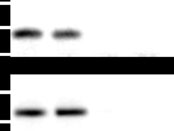Microsoft word - jppr212016 _ 1a k singh final
Research Article AIDBD: AUTOIMMUNE AND INFLAMMATORY DISEASES BIOMARKER DATABASE Kulwinder Singh1,*, Monika2, Neelam Verma1 1Department of Biotechnology, Punjabi University, Patiala 147002, Punjab, India 2Department of Biotechnology, Mata Gujri College, Fatehgarh Sahib 140406, Punjab, India Corresponding Author: Kulwinder Singh. Tel: +91-9888695963; E-mail: [email protected]
